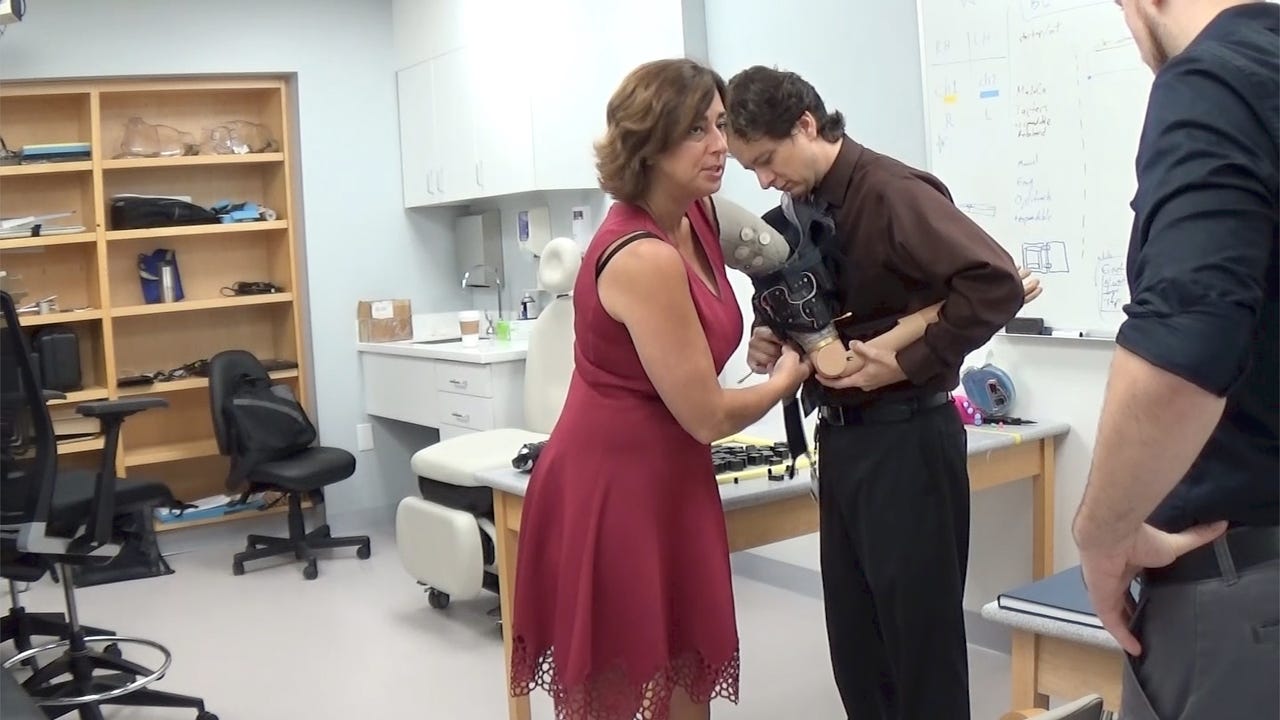Bionic limbs get a sense of movement


Researchers outfitted study participants with a system that provides a sense of movement in bionic limbs. (Photo: Cleveland Clinic)
One of the limitations of modern robotic prosthetics is that they have to be constantly watched because they lack a sense of movement. When an amputee is outfitted with a motorized hand, for example, she has to look right at it to control the movement, so it becomes more like a remote-controlled tool than an extension of her body.
Now, a team of researchers at Cleveland Clinic developed a solution. In a paper published in Science Translational Medicine, the researchers describe their system as a "seamless integration of minds and machines."
Paul Marasco, Ph.D, led the study, which successfully restored a sense of intuitive hand movement for people with amputations. The study's participants had previously undergone targeted nerve reinnervation, which is a procedure that creates a neural-machine interface by redirecting amputated nerves to the remaining muscles on their arms.
With this system already in place, the Cleveland Clinic took it a step further by using a small robot called a kinesthetic tactor to vibrate the muscles to simulate a sense of movement.
This technique gave participants better control because they could feel their missing hands moving, while they were actually controlling bionic limbs. According to the researchers, patients in the study were able to control their grip with such precision that they performed specific tasks as well as or better than able-bodied people.
"When the amputees think about closing their hand their rewired muscles contract and generate an electrical signal that we read with electrodes placed on the skin," Dr. Marasco tells ZDNet.
He explains, "When the computer sees that electrical signal from the muscle contraction it sends a signal to the robotic kinesthetic tactor that is placed over the muscle site where the amputees feel their movement sensation. That signal turns on the vibration to generate the illusion of movement that coincides with their intent to move."
Marasco says the goal of the research is to use movement sensation to streamline the relationship between patients and their technology. The initial focus is on prosthetic hands, but this technique could also be used to help patients who have lost a leg or other medical conditions that affect movement, such as a stroke or spinal cord injury.